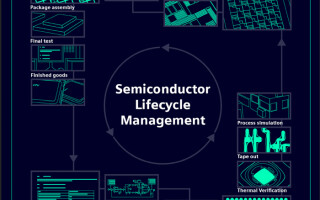Chipset Specific, Integrated Passive Devices (IPDs) Simplify Development of Next Gen Wireless IoT Applications
November 19, 2020
Blog

Companies like Semtech collaborate with RF component manufacturers willing to develop miniaturized front-end RF solutions specifically designed to seamlessly connect with Semtech’s LoRa® Chipsets.
For the next generation of low-cost, battery operated, wireless IoT products, the design goal is to provide exceptional RF signal range and stability, while also reducing power consumption, in a miniaturized package. As a result, leading RF chipset and component manufacturers are increasingly fine-tuning and improving their products to do just that.
To accomplish this task, leading chipset manufacturers create reference designs (technical blueprints of a system) that third parties can adapt and modify as required for their products’ applications. The reference design serves as proof of the platform concept and is usually targeted for specific uses. The goal is to fast track products to market by using front-end solutions to reduce risk in the OEM’s integration project.
With this in mind, companies like Semtech collaborate with RF component manufacturers willing to develop miniaturized front-end RF solutions specifically designed to seamlessly connect with Semtech’s LoRa® Chipsets. According to their web site, the company’s LoRa® and LoRaWAN® are already the ‘de facto technology for Internet of Things (IoT) networks worldwide’ and will provide long-range connectivity for a variety of IoT applications including next generation “smart” everything.
To learn more about how these requirements can be met with new, miniaturized, low profile solutions, we discussed the collaboration with Semtech with Manuel Carmona of Johanson Technology.
Q: Why does the RF circuitry play such a key role in next gen wireless IoT applications?
The starting point is the chipset, but the chipset requires specific RF circuitry to connect to the antenna. RF circuitry required is used to convert the signal from differential to single-ended in a specific impedance ratio using an impedance matching network and a balun. Most chipsets require this type of conversion due to the differential, two pin input/output configuration to connect with the single-ended antenna.
For many chipsets, the output straight out of the chipset is usually not matched to 50 ohms, which requires one to have an impedance matching network that must be designed in order to avoid loss of power signal, reduced battery life, and decreased signal range.
Q: How important are miniaturized, plug-and-play RF solutions for OEMs developing new products?
For the LoRa® platform, specifically, the ability to integrate all the RF components into a much smaller, low profile package would only increase the attractiveness of the chipset for miniaturized, battery powered IoT products. Without this option, OEM’s would have to design the entire capacitor/inductor scheme and mount many separate components onto the printed circuit board.
OEMs now have the option to utilize an integrated solution as opposed to an Inductor and Capacitor discrete solution. Integrated Passive Devices, or “IPDs,” deliver the same functionality as 10-40 individual RF components. With this approach, the entire front-end between the chipset and the antenna is manufactured in a single, ultra-low profile package that is less than 40% the total size of the same circuit comprised of discrete components.
With this device, which combines an impedance matching network, balun, and a filter, the entire front-end RF circuitry is reduced to a single EIA 0805 (2.0mm x 1.25mm) SMT component.
The Impedance-Matched-Balun-Filter is designed to operate within the license-free 868 MHz RF band used in Europe and the 915 MHz band for Australia and the Americas. The product pairs seamlessly with Semtech’s LoRa® and LoRa Smart Home™ RF transceivers SX1261, SX1262, and LLCC68.
Q: What are the advantages of a plug-and-play solution like an IPD?
A: Using an IPD makes the final PCB size smaller and simpler. Also, any changes in the geometry of the layout can affect the output performance, battery life and signal range.
In addition, we complete all the R&D and ensure it is optimized for a specific chip. We have to guarantee that the performance of this much smaller solution is equal or better than their larger discrete solution. So, each integrated package is thoroughly 100% RF tested to ensure all the components are working properly and are integrated together. Not only will it work, but it will comply with any FCC and ETSI regulatory emissions requirements.
IPDs deliver another significant benefit: increased reliability. By creating a literal circuit within a small LTCC package, variability and potential points-of-failure are all but eliminated when compared to mounting many discrete components.
Q: How is Johanson Technology able to create the entire circuit in such a small package?
A: We are a materials company first and foremost. We are constantly developing new ceramic materials that will better integrate circuits, reduce power consumption, and eliminate power loss.
Our background in material development is the key to being able to create the entire circuit in such a small package. The product utilizes a novel proprietary ceramic material in an LTCC (low temperature co-fired ceramic) manufacturing process designed to improve performance to High-Q levels.
The process to manufacture IPDs is similar to the technology already used to create multi-layer SMD component parts, such as capacitors and inductors. However, low temperature co-fired ceramic (LTCC) manufacturing allows the circuits to be embedded in as many as 40 separate layers in a three-dimensional package that is still very low profile.
For more information, contact Johanson Technology at (805) 389-1166, send a message to Johanson Team at: https://www.johansontechnology.com/ask-a-question or visit www.johansontechnology.com.





